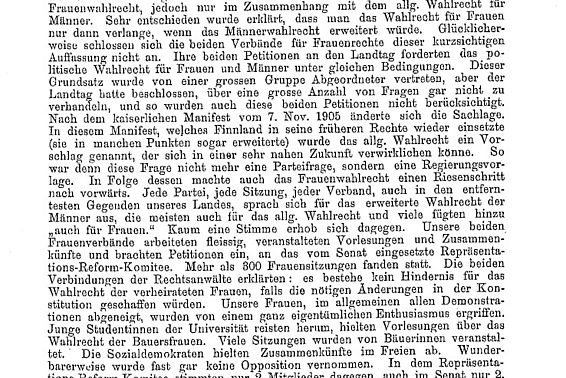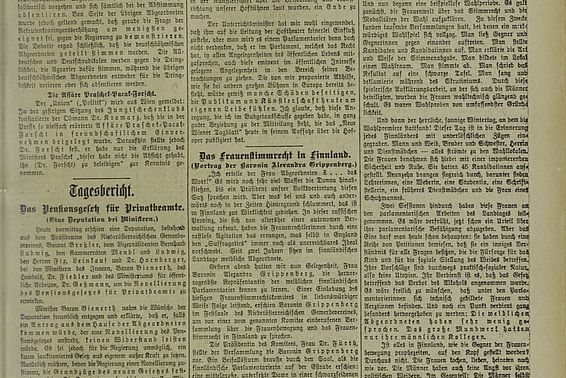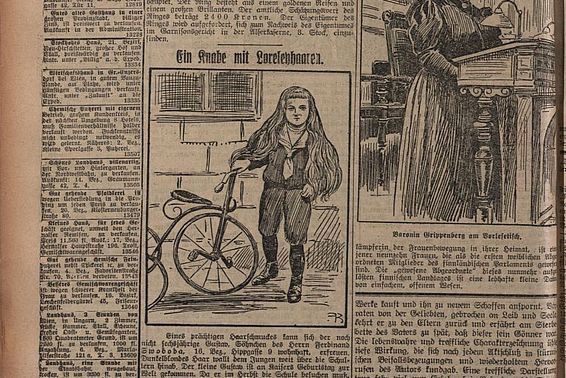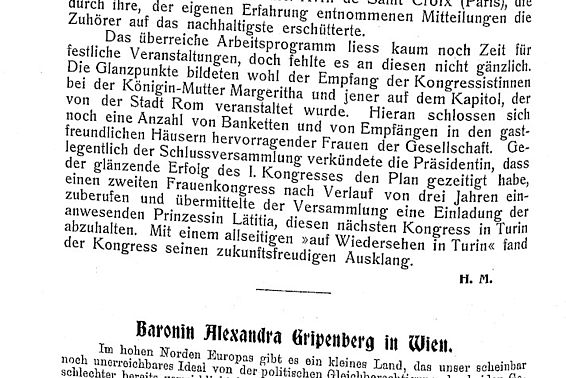
First women’s vote in the North – Finland
From 1809 on Finland was part of the Russian Empire and was granted extensive autonomy. It was the first country in Europe to adopt women’s suffrage: all adult citizens, men or women, were granted equal rights to vote and stand for election in 1906. This reform had been approved by the Russian Tsar and Grand Duke of Finland, Nicholas II.
Before that, Finland had a Diet in which four classes were represented – nobility, church, middle class and farmers – but its decisions had to be endorsed by the tsar. Before 1906 the suffrage was restricted and excluded 90% of the population – the great majority of agricultural workers.
Over the course of the 19th century there emerged both a nationalist movement which sought independence from Russia and a workers’ movement. The women’s movement developed at the same time: it consisted of middle-class women who were committed to equality on the basis of census suffrage, as well as of women from non-privileged backgrounds who were active – in the Socialist Party of Finland.
In 1899 the tsar issued a proclamation that equalled the abrogation of the Finnish constitution and autonomy. The Diet would lose the right to legislate. This led to protests in Finland. Resistance to the tsar was combined with demands for political and social reform. Universal suffrage was one of the cornerstones.
Late in 1905, riots broke out in Russia and spread to Finland, leading to a general strike in both countries. Because of this explosive situation, the Russian government felt compelled to make concessions to both the nationalist and the socialist movements in Finland. On July 20th 1906 the tsar endorsed the new parliamentary decree. Finland’s class-based system was replaced by a unicameral parliament. Finnish autonomy was restored. Universal equal suffrage was introduced in the country. All Finnish citizens over the age of 24 could now elect that parliament regardless of gender and social class.
The first elections for the new Finnish parliament took place in spring 1907. 19 women entered parliament as deputies onMay 25th 1907, along with 181 men. One of them, Miina Sillanpäa, became the first woman in Finland to hold ministerial office when she was made Minister of Social Affairs in 1926.





